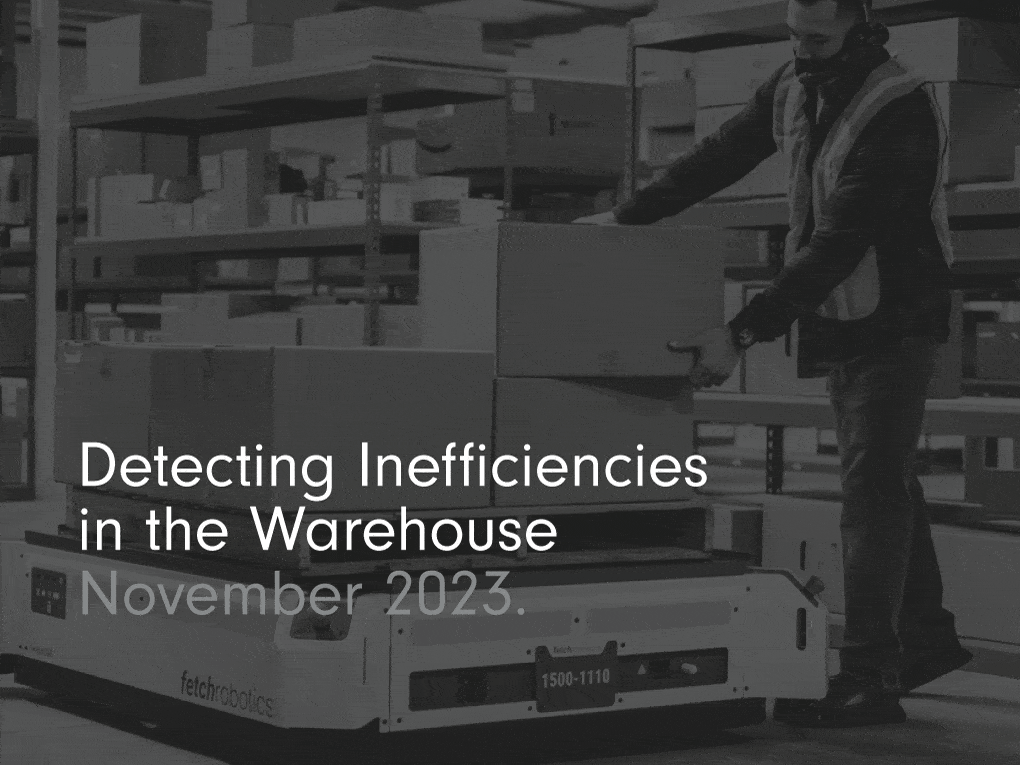Detecting Inefficiencies in the Warehouse.

Even the best performing warehouse has aspects of its workflow that it can enhance. To be one of the best performing warehouses and to stay ahead of the curve and beat your competition you must always be looking to detect the warehouse inefficiencies and optimise processes, improve systems and be more efficient.
The key focus for any improvements should always be about trying to become more effective is serving your customers. If you can create new systems and processes that mean greater customer satisfaction or improved speed, then you will be in the perfect position to grow your business. If you can do all that efficiently and with a clearly defined return on investment (RoI), then that is even better. While if all of these changes also improve overall operations and the working environment for your staff, then you have the perfect scenario.
However, before we start to make efficiencies, target business growth and improve the working environment, we must first highlight areas that might currently be unproductive.
People are vital to any organisation and almost every warehouse employs multiple individuals, however, many inefficiencies arise from the work environment and workflow in which they operate, rather than the individuals themselves.
Walking time.
Time spent walking between tasks, or carrying completed orders from one end of the warehouse to the other, can be considered wasted time. Your employees are far more valuable to you if they are working on more skilled tasks, such as picking, rather than walking.
Workload / tiredness.
Workers tend to get tired during their shift and as they get tired it is inevitable that productivity will start to wane. This is natural, but can lead to reduced output, increased errors and eventually repeated exhaustion can result in low motivation – which in turn can lead to more mistakes etc.
Tiredness can come from physical exertion, as well as simple, repetitive work, so if both of those elements can be removed, then efficiencies can be made.
Working time.
Your workers can obviously only work certain shift lengths and so they must stop at some stage. One area of potential inefficiency is how shifts end and handovers are managed. Do workers start to slow down ten or fifteen minutes before the end of their shift, or does it take ten or fifteen minutes to get up to speed at the start of a new shift?
Distractions.
Another natural point of inefficiency for people is getting distracted. From minds wandering in the middle of a task to chatting to friends and colleagues as they walk around the warehouse. Distractions are natural but are more likely to occur if people are bored or not engaged in the work they are doing.
Recruitment.
Despite listing lots of ways that people can be inefficient, they are needed in any warehouse and one of the biggest inefficiencies for any business is in replacing people. To hire new people for your business requires senior management time to advertise, interview and onboard. This is if you can find good people in the current climate. And if you do find someone, even the best new recruit will need a period of time to be trained and then get themselves up to speed.
Keeping your staff engaged, interested and enjoying their work is one of the best efficiency savings you can make.
A Solution?
One of the best ways to address all of the possible areas of inefficiency listed above is to employ autonomous mobile robots (AMRs) in your warehouse. AMRs can be rapidly deployed into your warehouse and integrated into your existing WMS.
AMRs can complement your workers and do the ‘walking’ for your staff. Moving items from one designated place to another – from pallets to complete orders that have been picked – can be left to the AMR, leaving your workers free to do the more specialised, valuable and interesting tasks.
AMRs need to recharge – although this can often be built into a workflow so that they recharge whenever they are not needed – but they don’t get tired like human workers do. They don’t need to stick to shift patterns either, nor do they mind carrying the heavy loads.
And AMRs don’t get distracted from the tasks they are programmed to complete.
All of this means that you can also save on the biggest inefficiency – hiring people. By using AMRs to work with your people, you can allow them to focus on the more interesting and engaging work – maintaining their enthusiasm and excitement in the job and keeping them longer, saving recruitment costs and hassles.
Find out how much AMRs could save your business by checking out our RoI calculator.